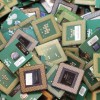How many electronic devices do you use on a daily basis? With headphones, cell phones, hard drives, and electric motors the answer might be countless. You’ve also probably replaced and upgraded your devices innumerable times. As you burn through all of that technology, consider the parts of the devices. Rare Earth magnets are key ingredients in most electronic devices. These small, powerful magnets are named for the rare Earth metals found on Earth’s surface and which are in limited supply. Because these elements are difficult to find in mass naturally and are also in high demand, many companies tried to develop efficient methods for recycling the elements from used products.
Recycling Rare Earth Magnets
Previously, recycling rare Earth magnets was not feasible or environmentally safe. Electronics use small amounts of a wide variety of elements making them extremely difficult to separate. In fact, it’s much easier and
less expensive to continue mining rare Earth elements from a limited supply of rock than it is to recycle the rare Earth materials we’ve already used. The best solution was to store the used electronics in landfills.
Now, however, researchers at the
University of Pennsylvania may have developed an efficient method for recycling rare Earth magnets from electronics. It used to take so long to recycle magnets that it wasn’t worth the trouble. Now, with the method developed by the
team at the University of Pennsylvania, the separation process is instantaneous and significantly more cost effective. The research team added a metal-binding molecule called ligand to a powder mixture of neodymium and dysprosium. Neodymium and dysprosium are both used to make rare Earth magnets. The ligand binds more easily to dysprosium allowing neodymium molecules to bind with each other making the two elements easier to separate from each other.
While they are still perfecting this method of separation, it is a huge step in the right direction for recycling rare Earth magnets. According to a 2013 report in
Yale Environment 360, we produce 49 million tons of e-waste every year. With improved separation and recycling methods, we can eliminate e-waste from landfills and reuse precious rare Earth magnets.
If you’re looking for other ways to recycle your magnets, check out this
DIY about repurposing unwanted refrigerator magnets.
Image by
Ekolist
